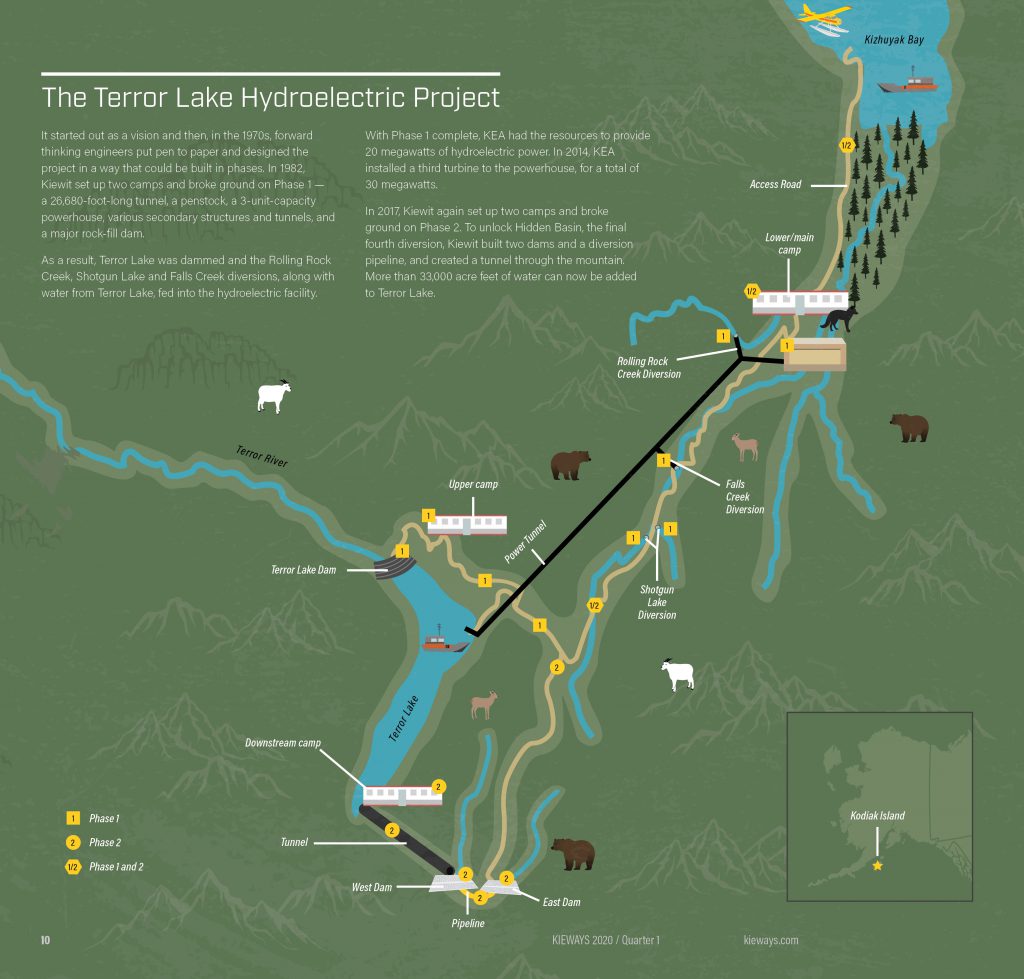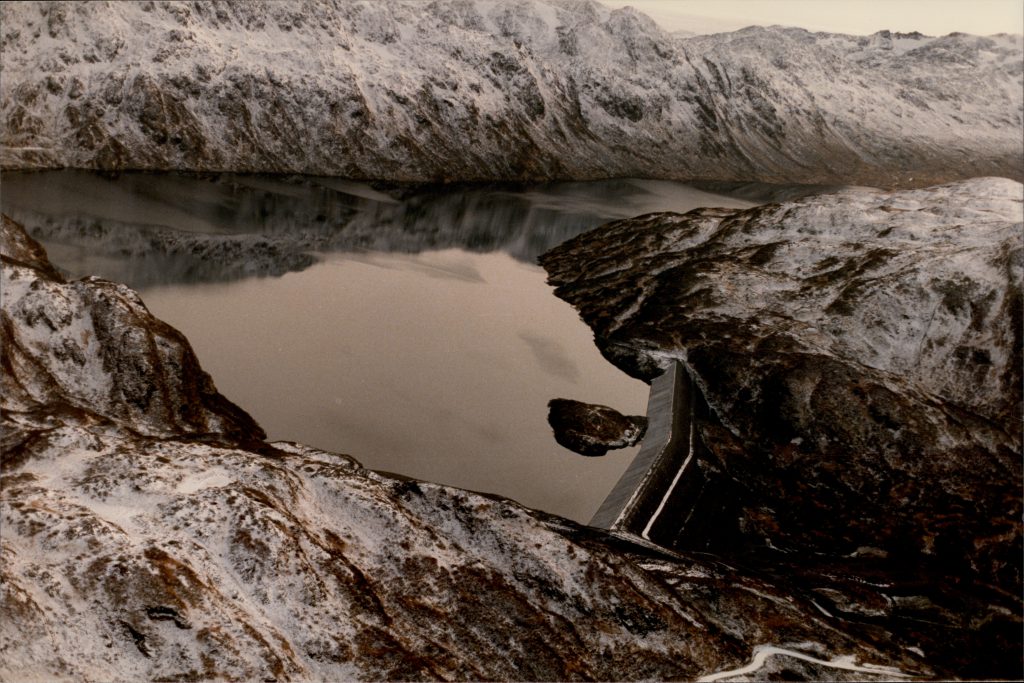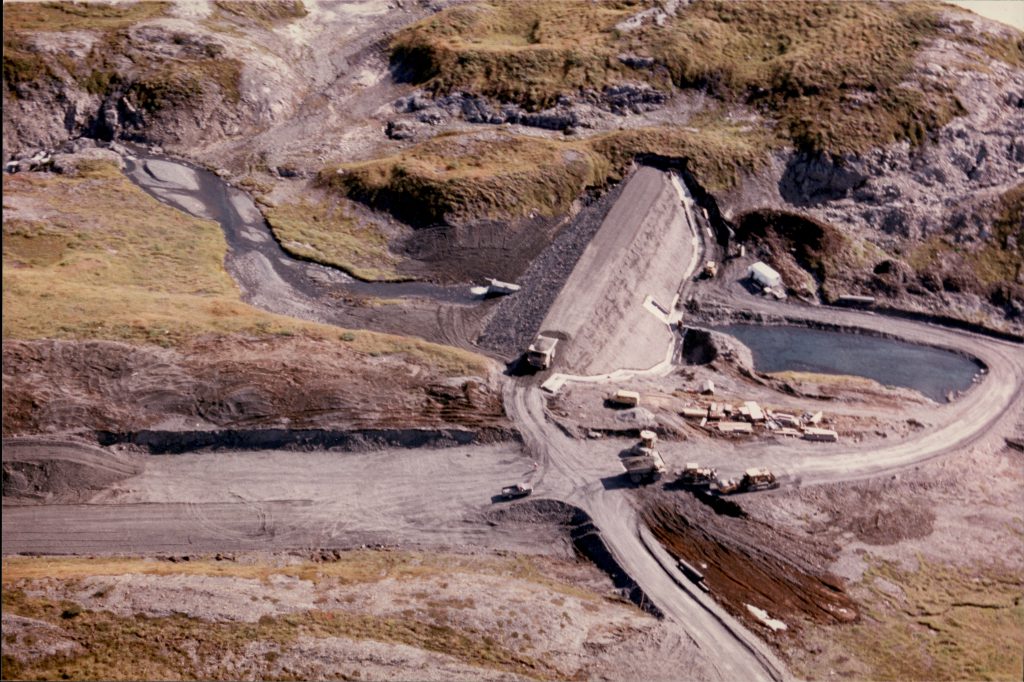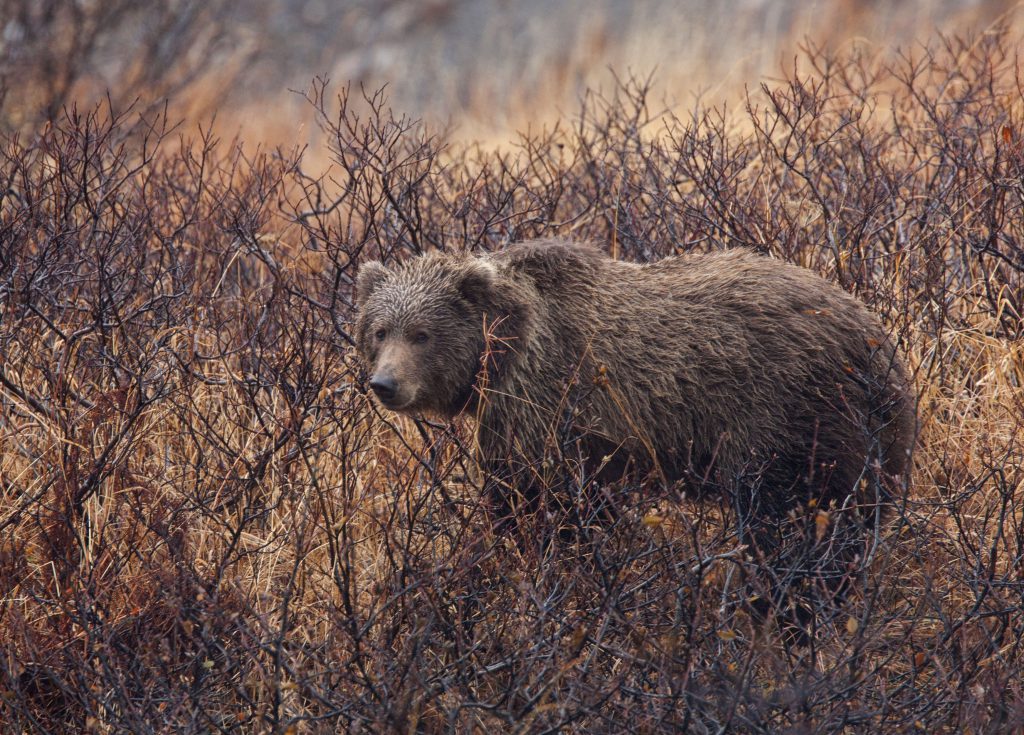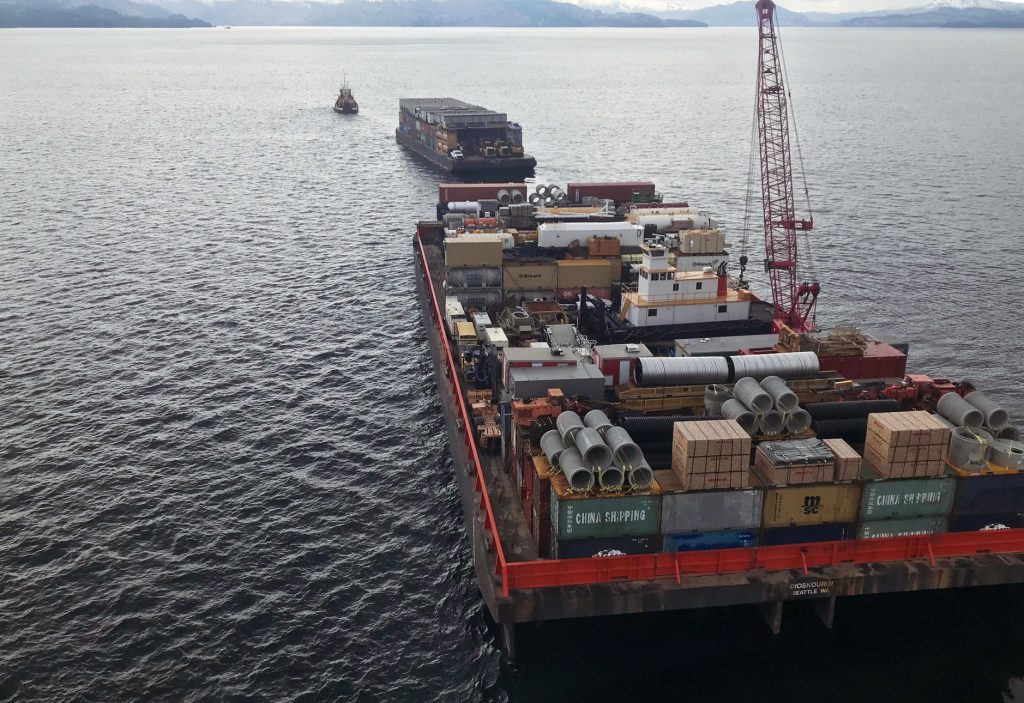Since ancient times, energy derived from falling or running water has been used as a source of renewable energy. China’s Han Dynasty used trip hammers powered by vertical-set water wheels to pound and hull grain, break ore and make paper. Centuries later, when the world’s first factory systems were established, England’s Cromford Mill became the world’s first water-powered cotton spinning mill.
In the 1880s, hydropower plants were installed across North America — in Ontario, Michigan, New York and Wisconsin — and supplied power to mills and lit local buildings. In the 20th century, U.S. President Franklin Roosevelt enacted policies that supported the construction of numerous waterpower projects. By 1940, hydropower made up 40% of electricity generation in the United States.
And it was in the 1940s that the Kodiak Electric Association, Inc. (KEA) was created.
On the surface, KEA is a rural electric cooperative that generates, transmits and distributes electrical power in Kodiak, Alaska. It owns, operates and maintains an isolated grid.
But dig deeper.
This grid is made up of renewable energy resources: hydropower, wind, two flywheels and a battery storage system. Base rates for KEA’s customers haven’t increased since the 1990s. To think of any commodity at the same price today as it was 30 years ago seems almost impossible. But not in Kodiak. KEA is redefining what
it means to deliver consistently affordable and renewable electricity.
And it all started with Terror Lake.
Powering a vision
The Terror Lake Hydroelectric Project started out as more than a concept. It was a vision.
KEA and its engineers knew that the secret to affordable, stable energy was all around them. It was in the water — the rainfall and snowmelt of the Kodiak mountains. In the 1970s, engineers began to lay out their elaborate vision and design for the undertaking, ensuring every drawing reflected the project’s maximum potential and not just for the demand at the time.
“The engineers had the foresight to see what resources were available and how that layout could occur,” explains Jennifer King, KEA regulatory specialist. “But at that time, the town didn’t need that much power. It only made sense economically to build what Kodiak needed and have the designs ready to move ahead when the town needed more power.”
The engineers designed the project in a way that would let KEA and its contractors build the project in phases — and in April 1982, a joint venture of Kiewit/Groves won the bid for the first phase of the Terror Lake Hydroelectric Project. Phase 1 consisted of a 26,680-foot-long power tunnel, a penstock in a backfilled trench down to a 3-unit-capacity powerhouse, various secondary structures and tunnels, and a major rock-fill dam.
Damming Terror Lake
The Upper Terror River feeds into Terror Lake, and the lake system is unique. It’s trans-basin, meaning it involves multiple watersheds: the Terror, the Kizhuyak and the Hidden Basin. The first phase of the project focused on the Terror and Kizhuyak watersheds. To capture as much water as possible, Kiewit raised the lake level more than 190 feet by damming Terror Lake, which in turn raised its surface area and increased storage capacity.
Different diversions, Shotgun Lake, Falls Creek and Rolling Rock Creek, feed water from different drainages throughout this region to supply the Kiewit-built hydro powerhouse. The powerhouse was designed for three turbines to provide a total of 30-megawatts of power, but the town, at that time, needed less than 20. Kiewit built the plant for three bays, but only installed two turbines.
“The penstock, the power tunnel, the tailrace, the powerhouse — everything was designed for the full three turbines, so when we needed that third turbine, we’d be ready,” King said.
Kodiak Island is known for its Kodiak bear habitation. Kodiak bears are one of the largest bears in existence, second to only the polar bear.
The third turbine
In 2007, the KEA board of directors released a vision statement stating that KEA will be 95% renewable by 2020. While hydro was a major energy source, it wasn’t KEA’s only energy source. Kodiak was diesel dependent.
“We used to be dependent on millions of gallons of diesel per year, and we had to buy that at different volatile price rates and pass that cost onto our membership,” said King. “KEA knew that diesel was not in our future. We couldn’t rely on diesel as primary power. We needed to find some other sources.”
With a renewed focus on alternative energy, KEA installed its first three wind turbines above the town on Pillar Mountain. They were the first megawatt-scale wind turbines in the state of Alaska. It then went on to add an additional three, but wind is wild and unpredictable. An energy storage solution was needed. Enter the two flywheels and a battery storage system.
Before long and ahead of schedule, KEA had met its renewable energy goal and the town began to change how it received its electricity. The old diesel power shipping crane in town was replaced with an electric, state-of-the-art crane. The town swimming pool is now being heated by an electric boiler. New housing is being built with electric heat and people are retrofitting their diesel boilers into electric.
“As we provided stable, affordable, clean electricity for the community, other uses of diesel in town became electrified, so our load expanded,” King said. “People said, ‘Wait, we have this great electric supply, why aren’t we using electricity instead of diesel?’ The better job we do at providing this energy, the more the town wants this energy and we need to stay ahead of it. We don’t want everyone converting to electric and then have to turn on the diesel engines.”
KEA did not want any reliance on diesel. By 2014, the third turbine was up and running in the Terror Lake hydro powerhouse.
Unleashing the Hidden Basin
For KEA to maintain its now 100% renewable energy grid, it needed to unlock the third and final watershed of the trans-basin Terror Lake — the Hidden Basin, a resource capable of adding 33,000-acre-feet of water to Terror Lake.
“The Hidden Basin is an amazing resource,” King said. “That water is fuel, and we now have that much more fuel added to our system.”
Because of the original big vision of Terror Lake, to fully incorporate the Hidden Basin, KEA and Kiewit didn’t need to change anything with their already installed powerhouse transmission lines. When Kiewit finished Hidden Basin construction in November 2019, KEA was left with an even greater passive, gravity-fed supply of hydro resources that will power its town with renewable energy for decades to come.
“This takes care of our load from here on out,” King said. “It really seals the deal that we do not need to return to diesel.”
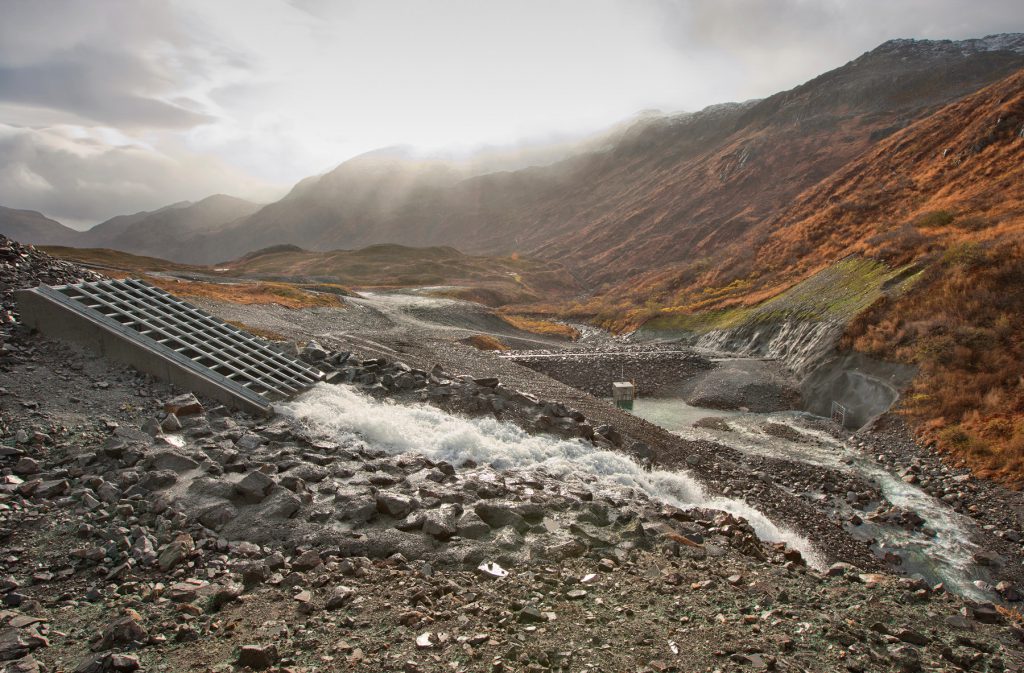
A year ahead of schedule
Longtime Kiewit Project Manager Clint Lane led the charge for Terror Lake’s final construction project. Terror Lake is located on a remote, isolated island, only accessible by boat or seaplane. But these are the types of projects that Lane, a 30-year Kiewit veteran, thrives on. He’s either led or been part of some of Kiewit’s most challenging remote island work throughout his career. His resume includes managing the Unalakleet Coastal Erosion, Akutan Airport and the Kodiak Airport Runway Safety Area (RSA) projects.
King was very pleased to have Kiewit as its partner with Lane at the helm.
“We knew all along that this would be a very heavy, field-logistics type of project, and that is why we are thrilled to have Kiewit,” she said. “Kiewit has good staff, equipment, people and planning. The team is diligent and able to adapt and make necessary decisions in the field for how this is going to work. There is such a practical mindset with a lot of good brainpower and equipment with horsepower behind it for the job to get done in these unique remote areas.”
To incorporate the Hidden Basin as the fourth diversion into Terror Lake, Kiewit constructed two dams and a diversion pipeline, and used drill and blast techniques to make a tunnel through the mountain. Because it is located on an isolated island, Kiewit set up two camps. The main camp housed up to 70 people working on the dams, diversion pipeline and upstream tunnel construction. Another camp was set up to house up to 24 people working on the downstream tunnel construction at Terror Lake. Additionally, the team needed to construct temporary access roads on the pristine island.
Kodiak is a rugged island, known to be unpredictable with harsh winter and autumn storms. Lane knew the best approach for this project was to get in and get out.
“Our contract said we had three years to build the project,” Lane said. “But from the beginning, we were focused on getting it done in two if we could.”
The team was able to plan it in a way that would allow them to complete all the major construction in its two-year goal, avoiding the need to deal with three winters of Terror Lake logistics. Boats and barges freeze in the water. Equipment freezes. Attempting to do construction work from November to April on the island was all but impossible.
In the end, the Kiewit team met its goal of finishing Hidden Basin construction a year ahead of schedule. A few will return to Terror Lake in the summer to do some final reclamation work, but for KEA, the Hidden Basin is fully incorporated and its big vision for the Terror Lake Hydroelectric Project is now complete.
“We’re very pleased that this water resource is now available to the community,” King said. “Knowing that we have Hidden Basin adding to the lake as soon as this winter and knowing that this spring we have that much more of a resource available, lets us know that we don’t need to do diesel runs to supplement our power supply.”
